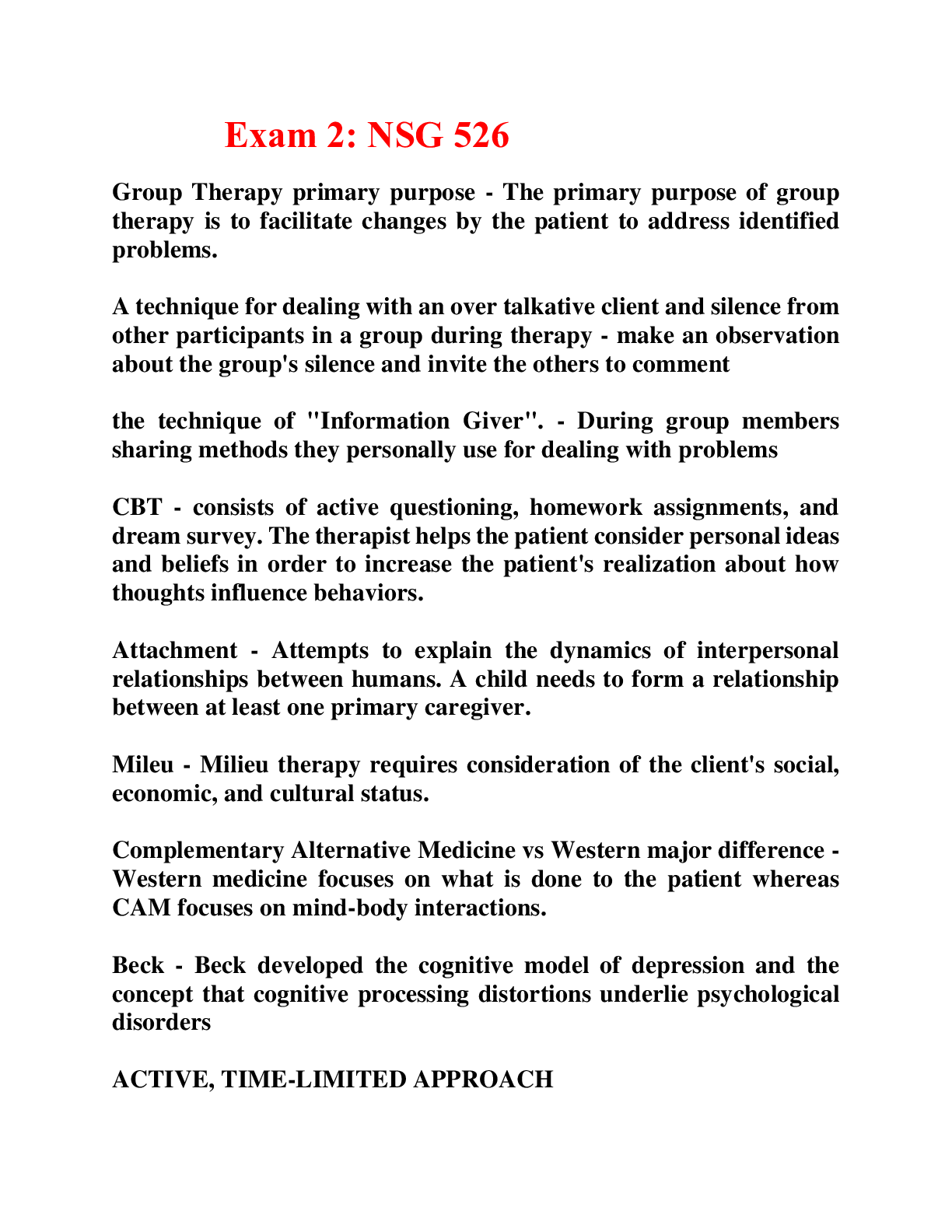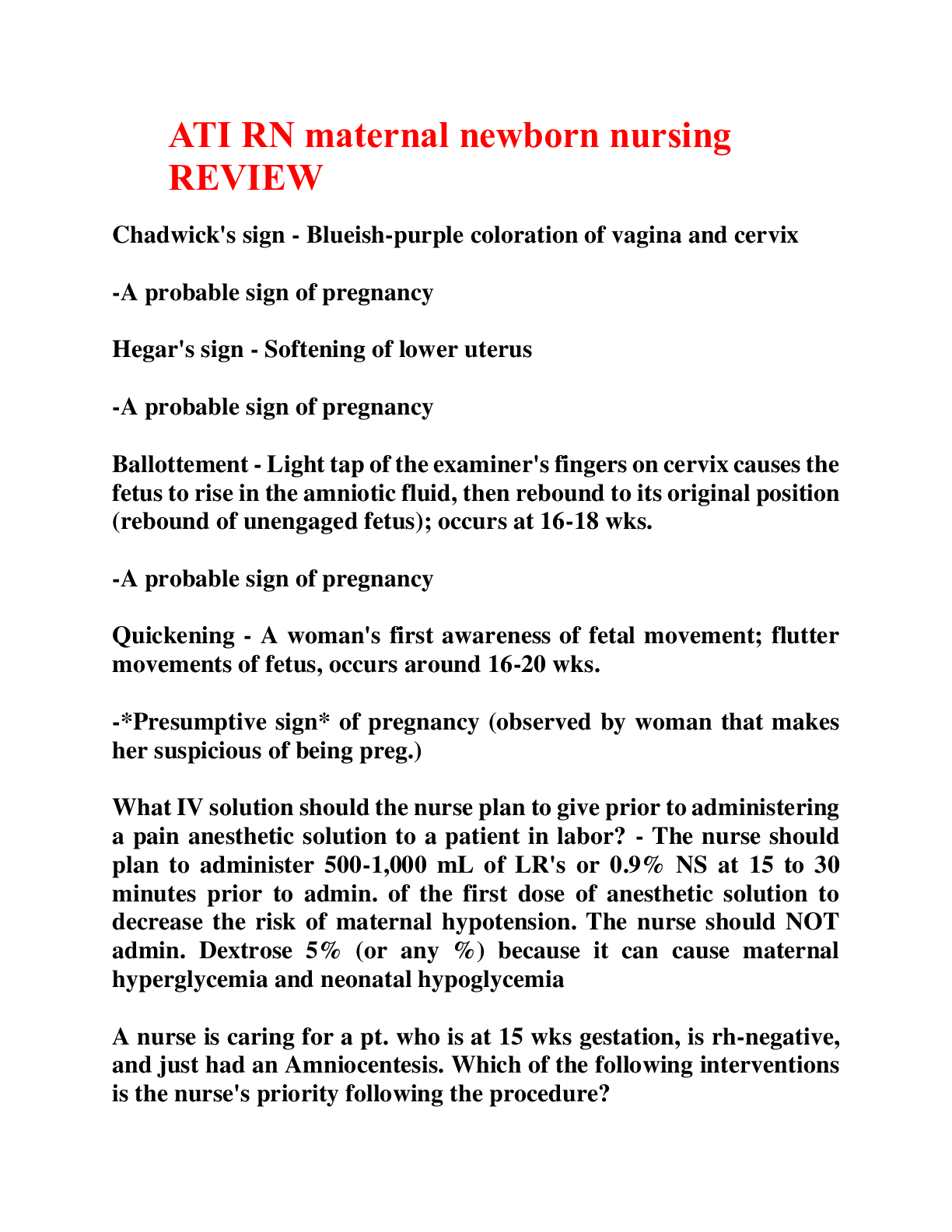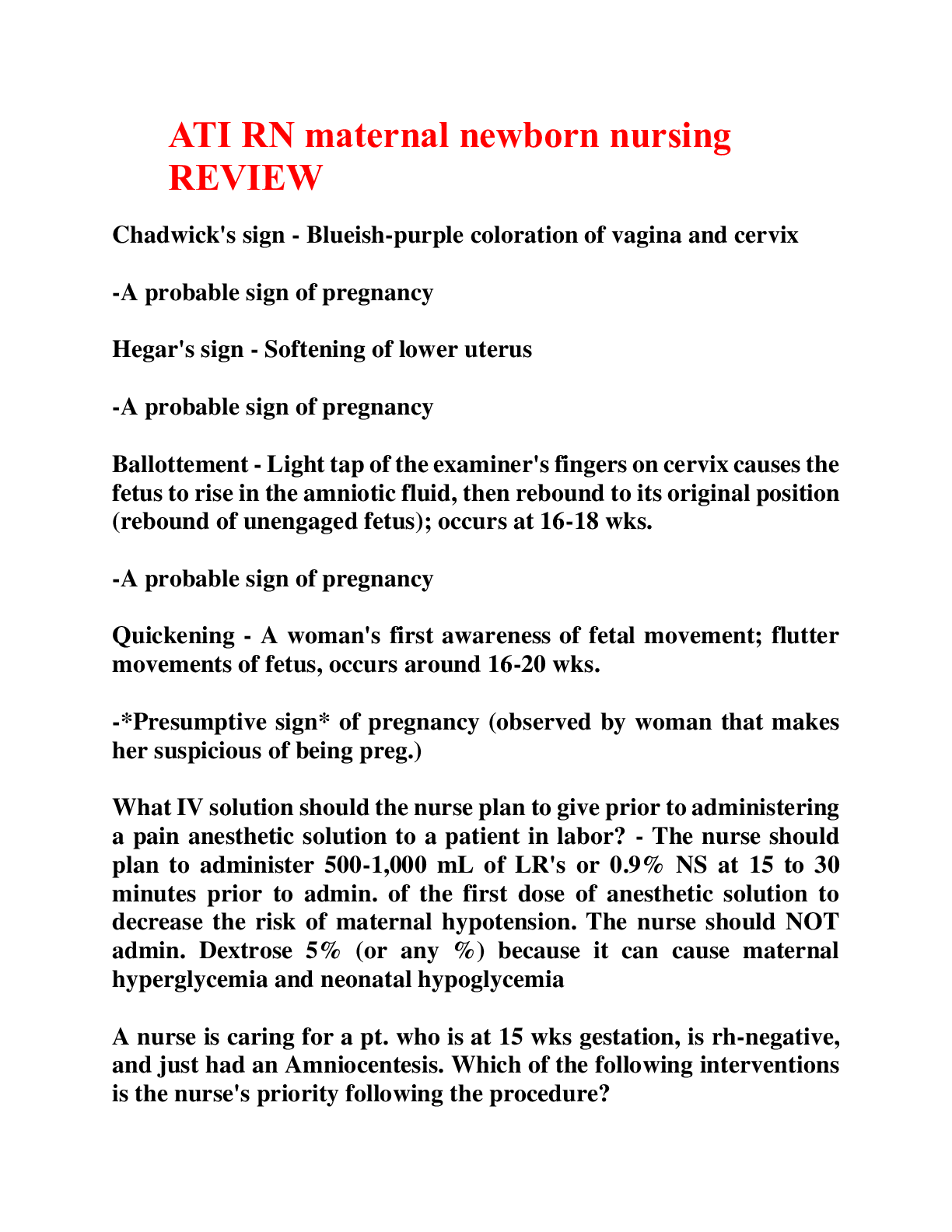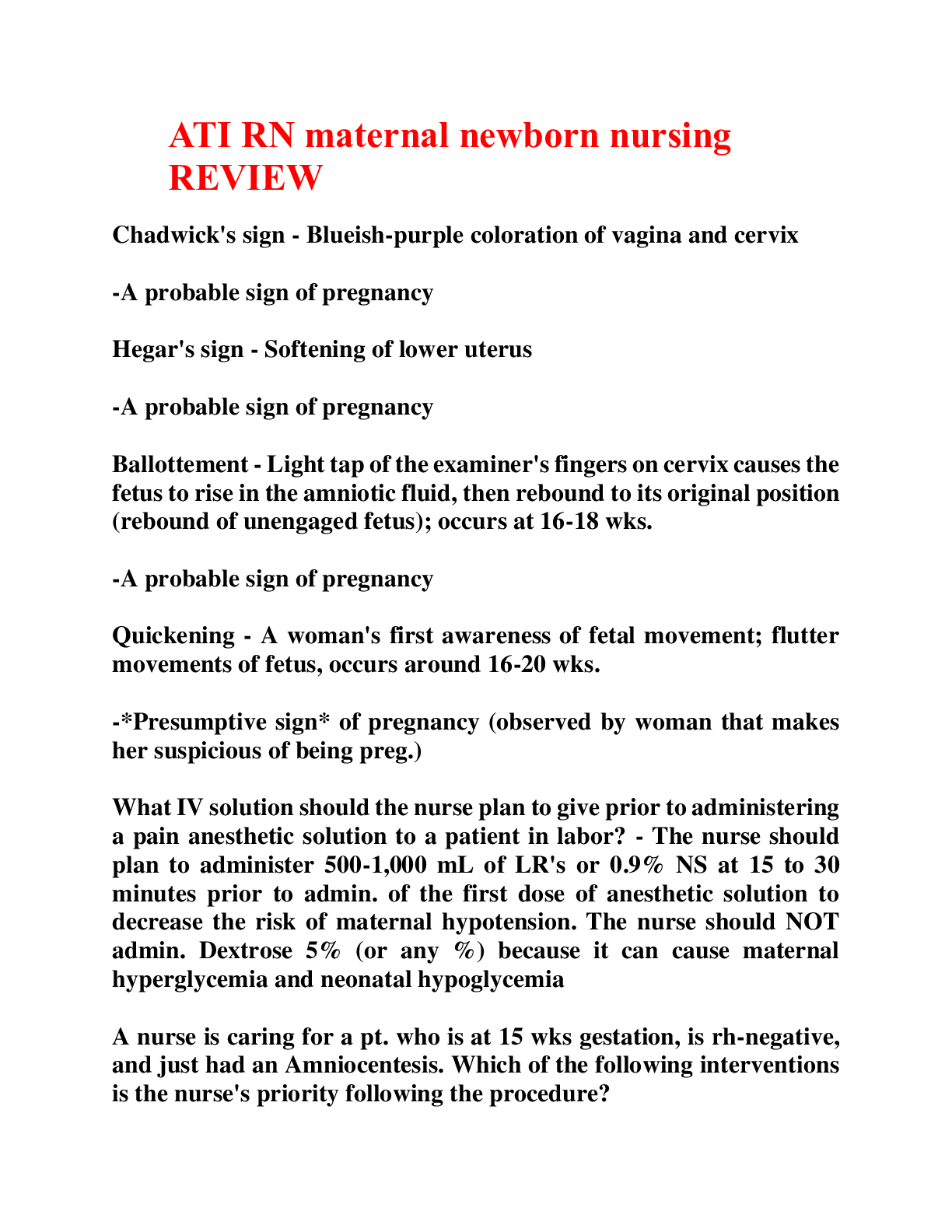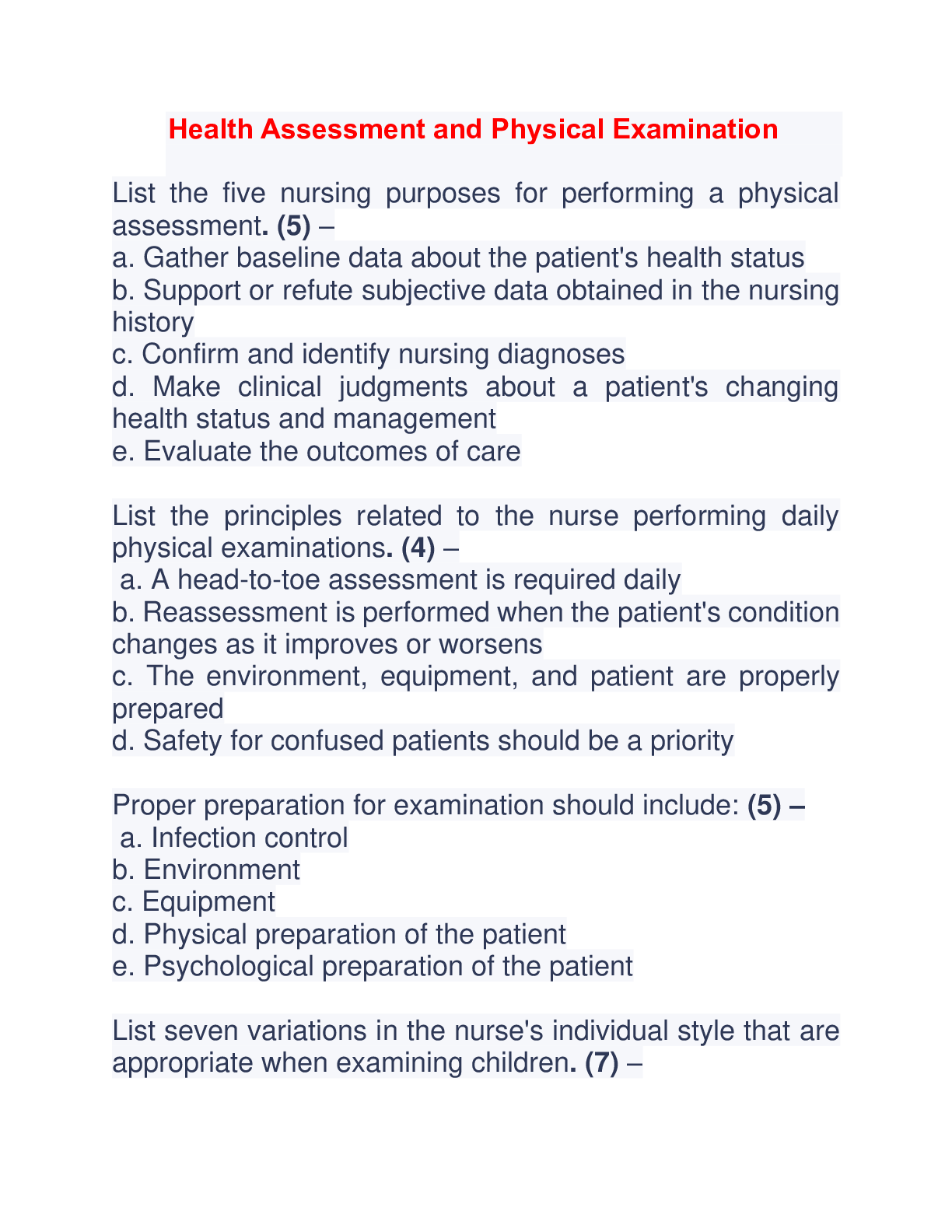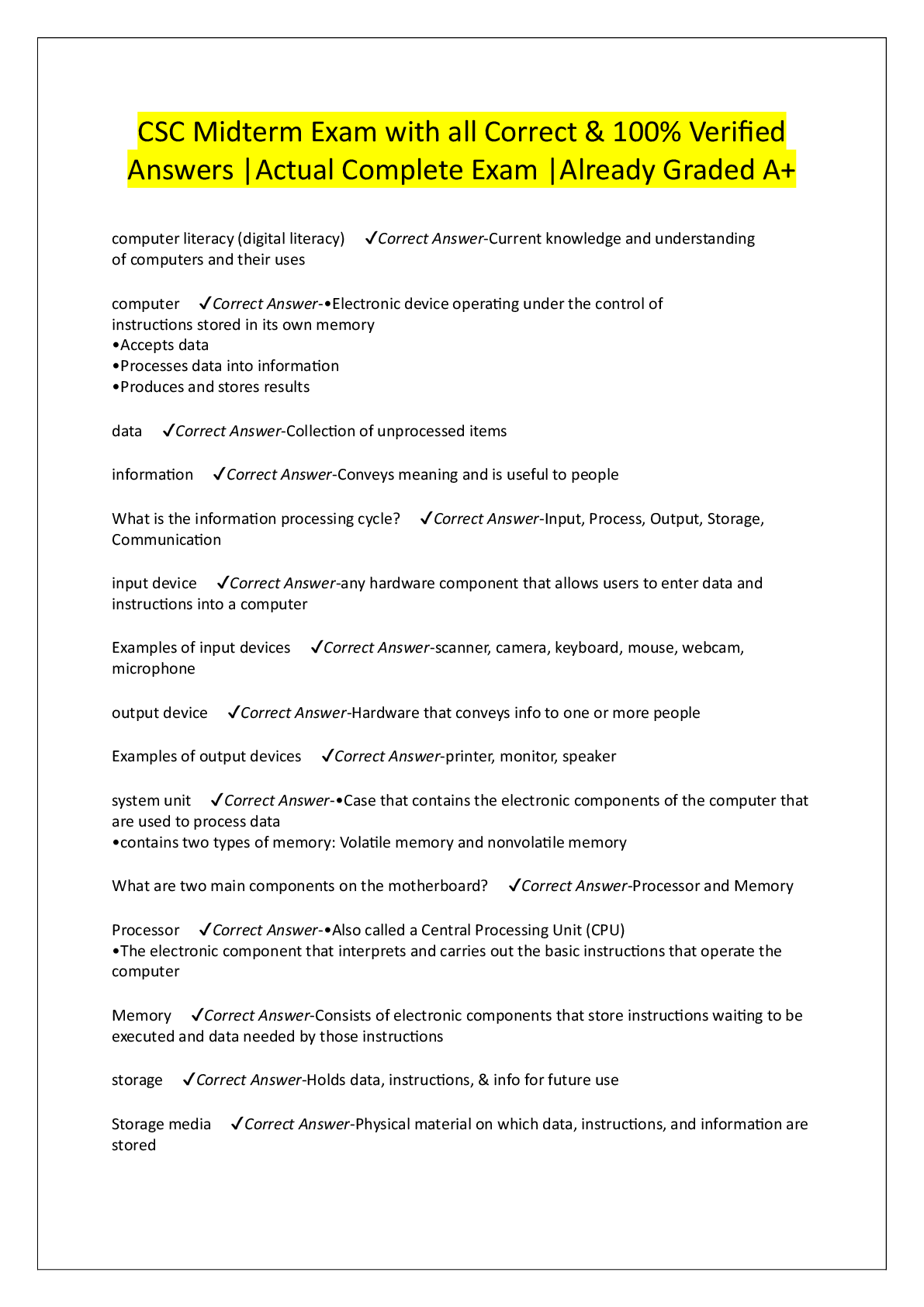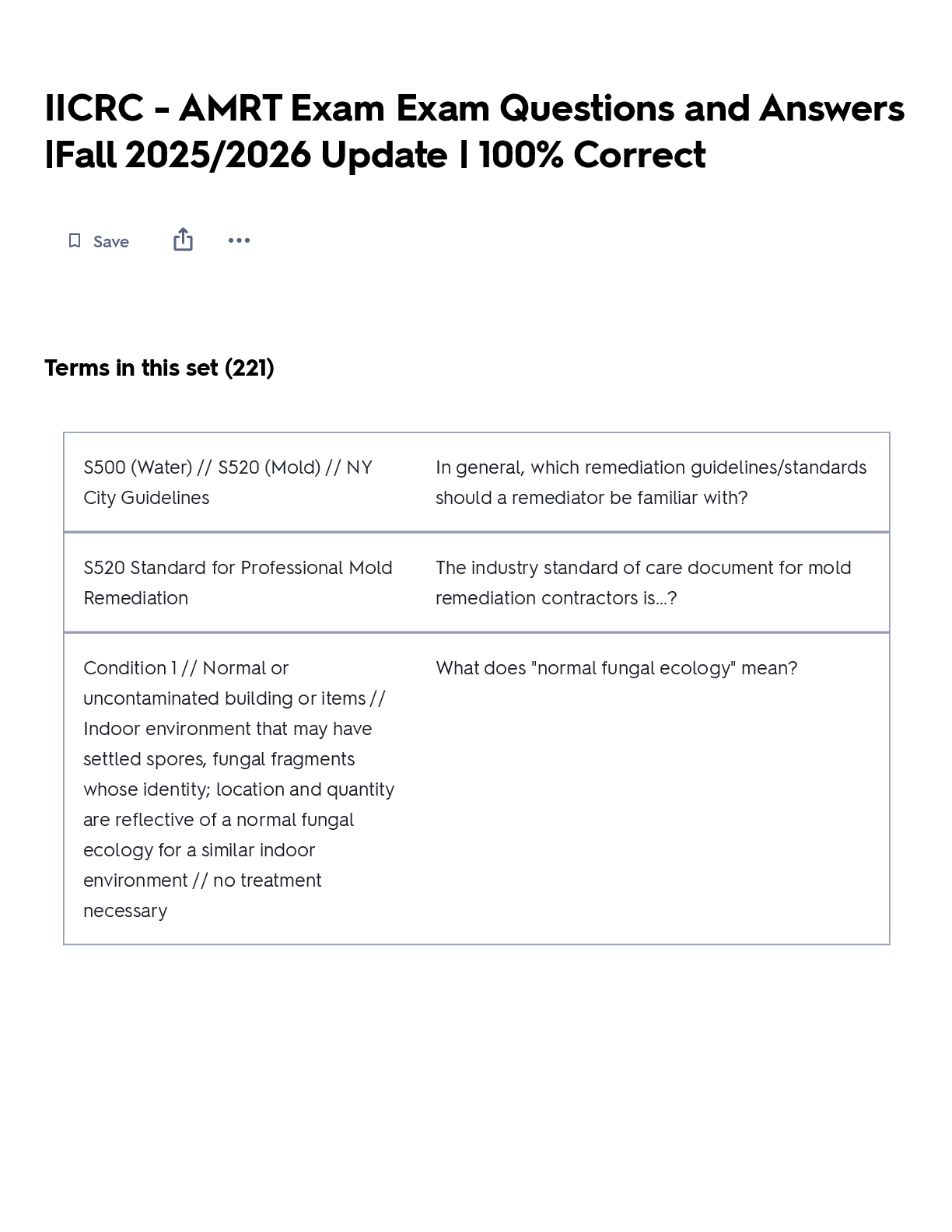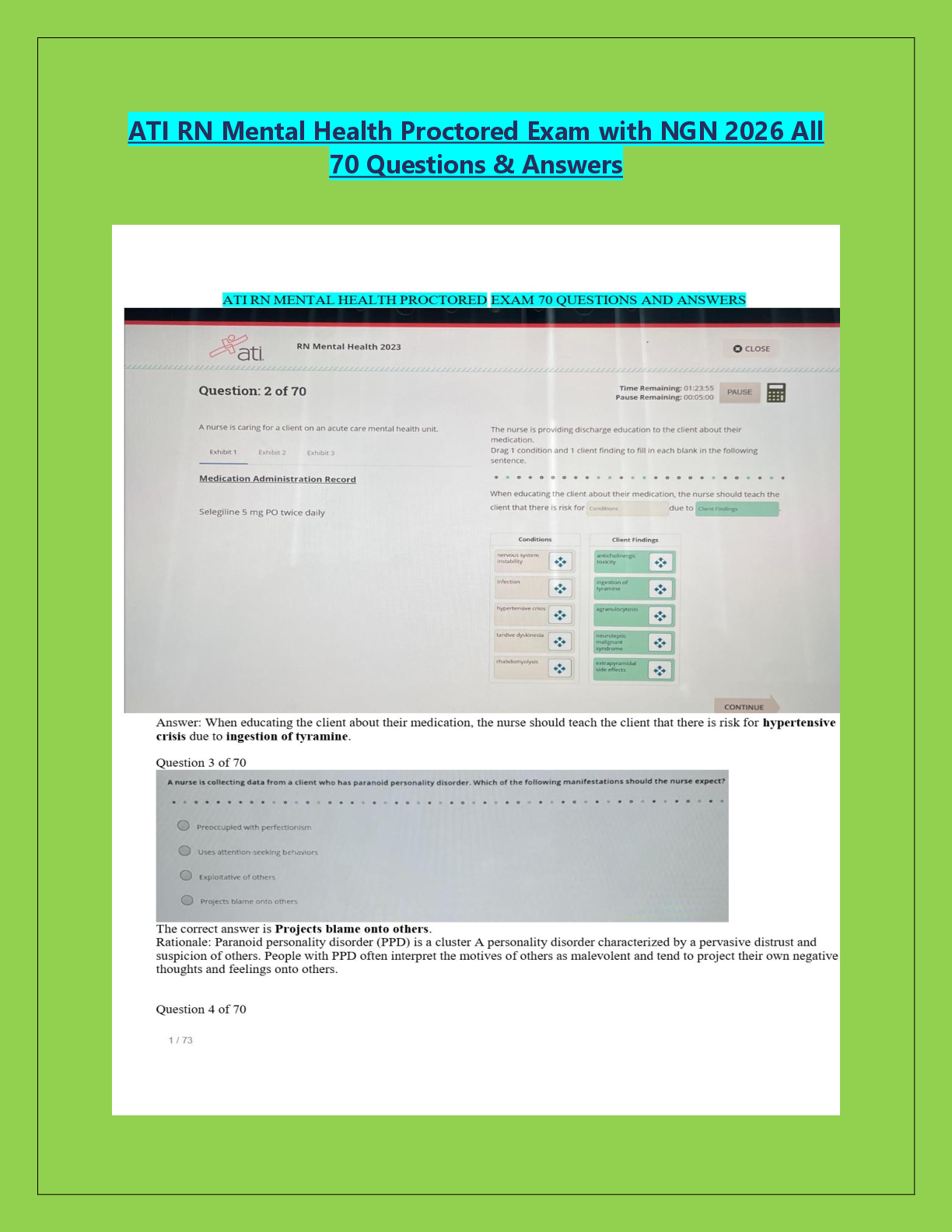Med Surg 2021 Hesi practice questions
Document Content and Description Below
A client is receiving Cilostazol (Petal) for peripheral arterial disease causing intermittent claudication. The nurse determines this medication is effective when the client reports which of the f ... ollowing? 1. "I am having fewer aches and pains." 2. "I do not have headaches anymore." 3. "I am able to walk further without leg pain." 4. "My toes are turning grayish black in color." - 3 Cilostazol is indicated for management of intermittent claudication. Symptoms usually improve within 2 to 4 weeks of therapy. Intermittent claudication prevents clients from walking for long periods of time. Cilostazol inhibits platelet aggregation induced by various stimuli and improving blood flow to the muscles and allowing the client to walk long distances without pain. Peripheral arterial disease causes pain mainly of the leg muscles. "Aches and pains" does not specify exactly where the pain is occurring. Headaches may occur as a side effect of this drug, and the client should report this information to the health care provider. Peripheral arterial disease causes decreased blood supply to [Show More]
Last updated: 2 years ago
Preview 1 out of 66 pages

Buy this document to get the full access instantly
Instant Download Access after purchase
Buy NowInstant download
We Accept:

Reviews( 0 )
$10.00
Can't find what you want? Try our AI powered Search
Document information
Connected school, study & course
About the document
Uploaded On
Aug 15, 2023
Number of pages
66
Written in
All
Additional information
This document has been written for:
Uploaded
Aug 15, 2023
Downloads
0
Views
172




